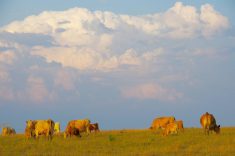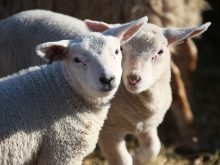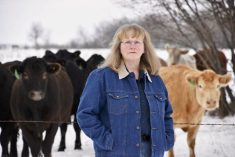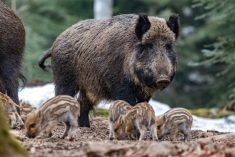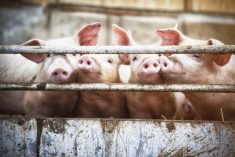Cryptosporidia and giardia are two intestinal parasites that can cause diarrhea in people and calves. These parasites are single-celled organisms and Cryptosporidium is a common cause of diarrhea in both beef and dairy calves under one month old.
Young children, pregnant woman and immune-compromised adults who are infected can have severe diarrhea and abdominal pain. We occasionally see cases in our veterinary students who work with diarrheic calves, especially during periods of high stress such as exam time.
Salmonella infections are becoming more common in dairy calves and we occasionally see outbreaks in beef calves too. There are numerous strains of salmonella that infect both people and cattle, but the most common strain in cattle is Salmonella dublin.
Read Also

Boosting productivity could mean historic farm revenues
FCC report finds increasing productivity in the Canadian agriculture sector could mean $30 billion in farm revenue in the next decade
Clinical signs include pneumonia in young calves with or without diarrhea as well as signs of a systemic infection such as severe depression. This is a host-adapted strain, which means the bacteria is especially adapted to reside in cattle.
However, it can still cause disease in humans and may require hospitalization in the elderly, young and immunocompromised. To make matters more complicated, some strains of Salmonella are resistant to multiple antibiotics.
E. coli can also cause serious disease in humans, especially the strains known as the Shiga toxin producing E. coli (STEC). The most common STEC strain is E. coli O157:H7, which can cause bloody diarrhea in people, along with stomach cramps and vomiting. This is commonly known as hamburger disease.
If the bacteria contaminate the carcass at slaughter, it can potentially be incorporated into ground meat and people can become infected by eating improperly cooked ground beef. However, they could also be infected through contact with cow feces while handling cows, especially if they don’t wash before eating.
Most people will recover in five to seven days, but five to 10 per cent of people can develop a potentially life-threatening condition known as hemolytic uremic syndrome, which can result in kidney failure. This specific strain of E. coli is a common inhabitant of the intestinal tract of cattle but does not cause clinical disease in bovines.
Ringworm is a fungal disease we often see in young growing cattle. The grey, scaly circular areas of hair loss are distinctive and often occur around the head and neck area. Transmission is by direct contact between calves and via contact with contaminated objects such as halters or fences.
The disease is difficult to treat in cattle, although it is self-limiting and will eventually disappear, usually within a few months. The disease can easily spread to people and can create the same circular crusty areas on hands and arms if handling cattle affected with ringworm with no precautions.
There are several diseases that can potentially cause abortions in cattle that are also zoonoses. Q fever and leptospirosis can cause abortions in cattle and sheep that can result in human infections and disease.
Leptospirosis is shed in the urine of infected animals and can infect people through abraded skin. In people, leptospirosis causes a headache, fever, severe muscle pain, diarrhea and jaundice. In animals and people, severe infections can lead to kidney failure.
Q fever is spread largely through placental membranes and fetuses and is a bacterial cause of abortion in cattle and sheep. It can be spread through direct contact with infected material and by inhaling dust particles that might be contaminated.
It can cause a flu-like illness in people, but pregnant and immune-compromised individuals can have more serious consequences and should not work with cattle or sheep that are giving birth.
Sheep have a higher rate of infection with a number of zoonotic pathogens, and pregnant women and immuno-compromised individuals should take special care around lambing time to avoid infections.
Rabies is a fatal zoonotic disease, and cattle and sheep can occasionally get rabies if bitten by a rabid animal. Any animal that shows signs of nervous symptoms should be considered a rabies suspect and appropriate precautions should be taken, such as wearing gloves while handling or examining the animal.
Other zoonotic diseases such as anthrax, brucellosis and tuberculosis are rare in North America, largely due to government control programs.
What can you do to protect yourself? It really is simple, although I think many of us get lazy and careless about doing these simple things.
First, wear protective clothing when working with animals. Coveralls and boots do more than keep your clothes clean. When you take them off, you leave the bacteria behind. Washing boots with soapy water to remove feces and contaminating bacteria will help prevent the spread of bacteria and viruses to other areas on the farm.
Wear protective gloves when treating calves or dealing with a birth and in situations with increased exposure to birth fluids, placentas and feces.
Finally, and most importantly, wash your hands after you work with animals. Hand washing is the simplest and most effective method of stopping disease spread.



